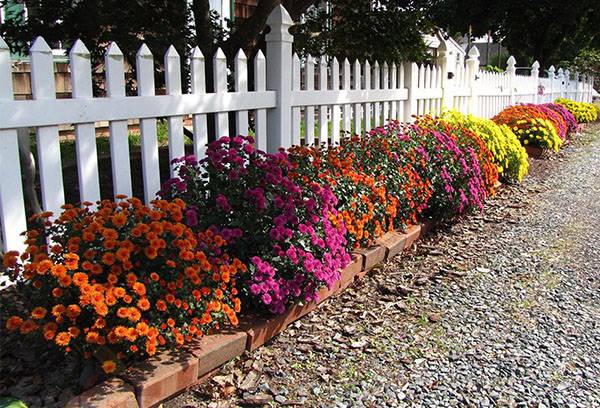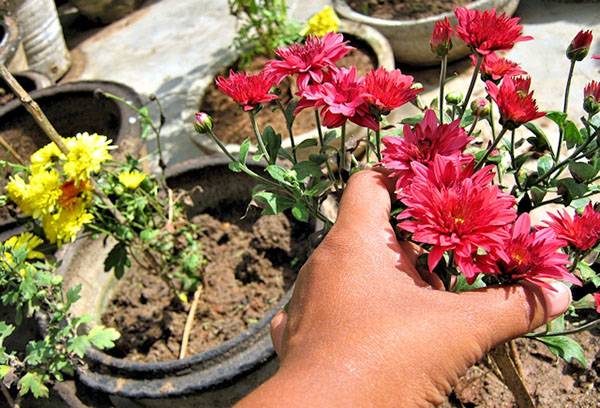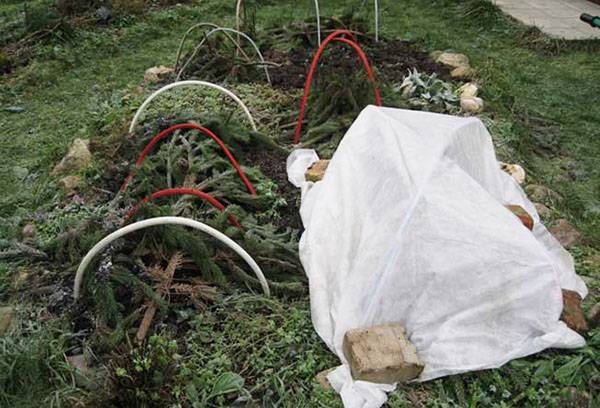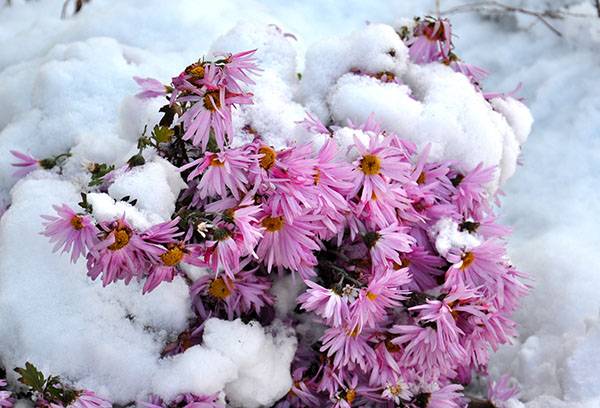Several ways to save chrysanthemums in winter
Chrysanthemums are bright unpretentious flowers that decorate autumn flowerbeds in a summer way. Many root samples from bouquets, planted on the site and admire them until the first frost. And, of course, everyone wants to preserve chrysanthemums in winter, so that next summer the bush will again delight with flowers. There are several ways, the choice of which depends on the variety and the availability of conditions for winter overexposure.
Varieties
Zoned varieties of chrysanthemums can survive the winter on the flowerbed, but there are those that need to be dug up. These are mainly compact gift bushes or Indian specimens rooted in bouquets. When planting in the ground, dwarf chrysanthemum will grow, the bush will fall apart, but flowering will continue. If you leave this variety to winter on the street, it will freeze. Many Indian varieties also do not tolerate cold.
If there are no suitable premises for winter overexposure of chrysanthemums, it is advisable to acquire cold-resistant species. These include:
- Oak;
- Korean;
- Everest;
- Purple Haze;
- Red Moscow.
The flowers and leaves of these chrysanthemums are smaller, but they are less demanding on climatic conditions, patiently tolerate winter cold.
Tip
Many flower growers believe that in regions with frosty winters, all chrysanthemums need to be dug up for the winter, regardless of their cold resistance. Such bushes in spring grow faster, almost do not get sick and bloom lushly.
Indoor storage
The insulated basement of a private house allows you to solve all the problems with preserving not only vegetables and preparations, but also flower tubers and rhizomes.
Dig a chrysanthemum literally before the first frost. If a little later - then it is not critical. Previously, all the stems are cut to 10 cm. It is better to leave more lumps of earth. If the floor in the storage is not earthen, then the dug out rhizome is transferred to a box or other container filled with a mixture of sand and peat (1: 1). Usually, chrysanthemums are left under a canopy until the frosts are stable, because in the room the rhizomes can start to grow and begin to lose strength.
The optimum temperature for wintering chrysanthemums in the basement or cellar is from 0 to + 4 ° C, permissible from -1 to + 5 ° C. If the floor is earthen, then the rhizomes are laid directly on it, fitting them tightly to each other. So they will not be airy, and natural moisture is enough from the ground.
If there is no basement, then the following options are suitable:
- unheated country house or garage;
- veranda;
- solid barn;
- loggia.
Tip
Do not leave winter dug chrysanthemum at home. The plant feels the onset of a dormant period. Without the appropriate daylight and lack of ultraviolet light on the windowsill, it withers and dies.
Rhizomes of chrysanthemums stored in country houses, garages or loggias, it is desirable to cover with breathable material. If possible, once a month the containers are slightly moistened (this is especially important for spherical chrysanthemum). If there is a shoot, then it must be cut.
The main advantage of this method of preserving chrysanthemums is that, in anticipation of spring, they can begin to germinate. To do this, in early March, the rhizome is transferred to a bright room with a temperature of about 15 ° C. As soon as the sprouts begin to appear, they are carefully separated and transplanted into separate containers.
Outdoor storage
If there is no suitable room, then chrysanthemums can arrange a safe wintering on the street. To do this, dig a trench 50 * 50 or 70 * 70 cm in size. Rhizomes are firmly laid on the bottom (with stems up), voids are covered with peat or light soil.
As soon as the freezing temperature is established, they begin to shelter the chrysanthemums.
- The first thin layer should create volume and provide ventilation. Fragments of slate, light reinforcement, trimming corners will do. Branches are undesirable to avoid the development of fungus on chrysanthemums.
- The second layer (approximately 0.5 m) is warming and absorbing. It can be dry leaves (without scab and fungus) or chopped straw.
- The third layer protects the rhizomes of chrysanthemums from rain and heat. A piece of a dense film or roofing material is suitable. At the edges of the material is fixed.
In these grooves, chrysanthemums successfully survive until spring. The downside is the inability to control the state of rhizomes.
Tip
Prudent summer residents prepare natural covering material throughout the season. This may be grass, mowed by a lawn mower, straw, coniferous litter, pine cones, sawdust. All materials are dried and stored until winter.
Some owners of glass or polycarbonate greenhouses use them in winter to store chrysanthemums. The bushes are dug up even before the frost, transplanted into the greenhouse, where they continue to grow and bloom. After the minus temperature is established (about 5-7 ° C), the stalks of chrysanthemums are cut in the greenhouse, the bushes are covered with dry mulch and covered with lutrasil. In the spring, they begin to grow rapidly and are transferred to the flowerbed already stronger.
Wintering in the flowerbed
Cold-resistant garden chrysanthemums and in the open ground will not suffer from frost in the winter, if they are properly prepared in the fall (without digging). After the first frosts, the stems are trimmed to 15 cm (young growth does not need to be touched). It is useful to treat the stumps and the soil around with a solution of copper sulfate (10 g per 0.5 l of water) or Bordeaux liquid - this will serve as a prevention of fungal diseases for the next season. Then the bush slightly hills. It is important that there are no grooves where water accumulates.
The second stage is filled with dry mulch (in a layer of 40-50 cm). It is desirable that the mixture contains rigid elements (cones, needles) that add volume and provide ventilation. Spruce branches or a couple of layers of covering material can be laid on top - it will provide air exchange and protect against precipitation.
Some, after the first frost breaks the flowers, simply cut the chrysanthemums in the garden and cover them with fir branches. It should be noted that the needles have disinfecting properties, so such a shelter does not provoke a fungal disease.
Saving by cuttings
If chrysanthemums were purchased in late autumn and there is no way to arrange them for wintering in a suitable room, then you can leave flowers in the apartment. However, there is no guarantee of their safety until spring (even with backlighting), therefore, cuttings are used. Potted plants are located on the windowsill closer to the window, away from heating. Several cuttings (3-4 cm long) are plucked from the leaf sinuses. To root them, small cups filled with nutritious soil are prepared.
The planting technique is simple: a depression is made in the middle of the container, sand is poured into it, moistened, and then the stalk is immersed (about 1 cm). The glass is tied with a plastic bag, but loose so that ventilation remains. In such a greenhouse, the stalk of a chrysanthemum usually “sits” for 1-2 months, and then starts growing. As soon as the roots become visible through the walls of the container or the first leaves appear, the shelter is removed. Buds may form, but they are immediately removed. A healthy planting material will be ready by spring.
Chrysanthemums impress with their varietal variety, brightness, original forms. But many are afraid to grow them precisely because of the risk of freezing. Fortunately, it is not difficult to keep chrysanthemum bushes until the next season, even in the absence of a suitable room.



